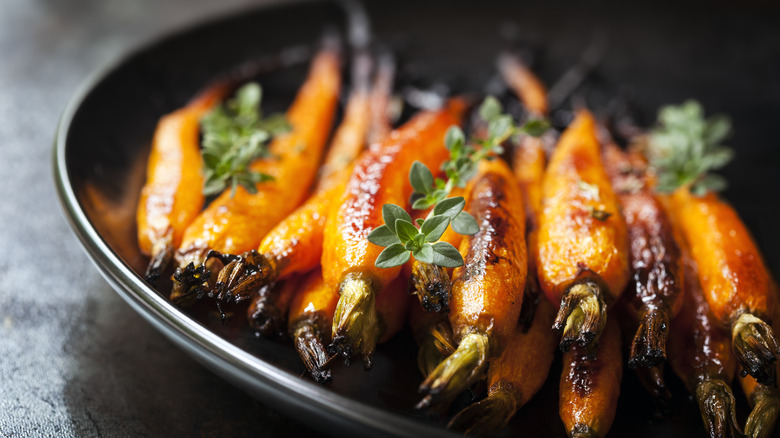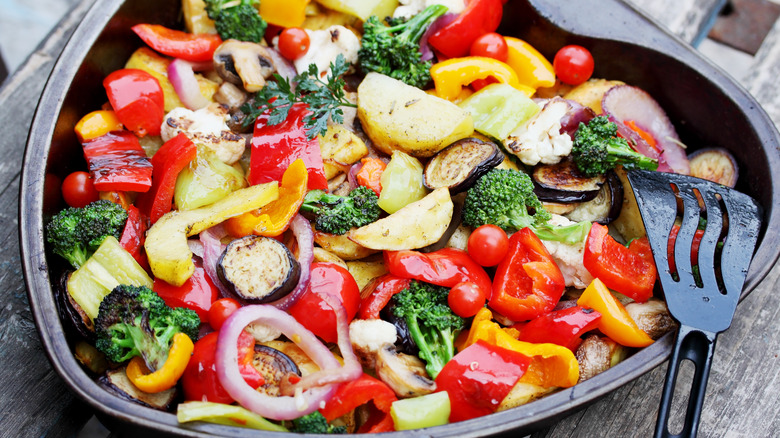This Is The Biggest Disadvantage To Braising Vegetables
We may receive a commission on purchases made from links.
Everyone knows that vegetables are an important part of a healthy diet. And there are a lot of ways to prepare the antioxidant-packed produce. You can roast them, boil them, steam them, fry them, or mash them. You can also eat most of them raw, chop them up into a salad or casserole, or, in the case of some, mash them into a savory puree. Another common way to cook veggies is to braise them.
Braising is a method that involves simmering food in liquid, whether it be vegetables or meat. You can do it in the oven or on the stove, and it's often done in a Dutch oven (finally, you can put the fancy Le Creuset to use). It's easy because you essentially can "set it and forget it." Unlike stir frying or grilling, there's zero work required on your part after you put them in the oven. But unfortunately, there is one downside to braising vegetables — here's what you need to know.
Braised vegetables lose their texture
While braising vegetables might be an easy, hands-off method of preparing them, there's one negative — the veggies won't have a crispy, crunchy texture. Because you're simmering them in liquid for a long time, they soak up the moisture, which leaves them soft and a little mushy. However, that isn't always a negative — braising is great for hardier vegetables (like carrots, Brussels sprouts, or sweet potatoes) for the very fact that it does soften them up. And the experts at Masterclass describe the texture of braised vegetables as "melty caramelized."
Plus, some would argue that what braised veggies lack in crunch, they more than make up for in flavor. You get the aforementioned caramelized, slightly sweet note along with all of the flavors infused from whatever liquid you're using to braise and any aromatics, herbs, or seasonings you add. Another bonus is that it only takes 15 to 25 minutes to cook.

